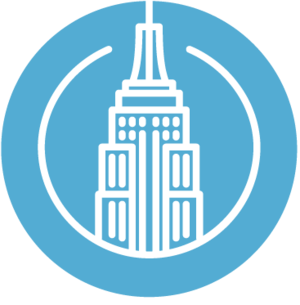5 Key Lessons on AI Adoption for Nonprofits
Last week, Decoded Futures, a project of the Tech:NYC Foundation, hosted a pilot event to help workforce development and education nonprofits in New York City enhance their capacity with AI.
The event prefaces a larger program, where through the fall, we’ll collaborate with technologists and Tech:NYC member companies and do hands-on learning sessions to explore how AI can improve workflows for these organizations.
New York City is home to more than 46,000 nonprofits and millions of New Yorkers rely on nonprofit organizations for essential services. As the city becomes a global leader in artificial intelligence, it’s critical that nonprofit organizations are equipped with the tools to better understand and use the technology:
85% of the Robin Hood Learning + Tech Fund’s partners report that one of their top priorities is understanding AI and its implications for their work.
In 2023, less than 15% of nonprofits surveyed by Robin Hood indicated they had engaged with an AI-related learning or activity.
While the majority of participants at last week's event indicated they had at least experimented with AI, it's clear that many questions still persist.




The research:
After interviewing over 25 nonprofits and tech leaders over the past three months, it became clear that AI has transformative potential, but many still face foundational questions: How is AI being used? What fears exist? How are tech companies applying it? And most importantly, where do you begin?
Three key research findings stood out from our work this summer:
Building AI Fluency Takes Time: AI is more like learning a language—it requires time, commitment, and practice to master.
Transformation Starts at the Top: AI adoption is most successful when leadership actively supports its integration across workflows.
Learning by Doing: The best organizations learn through action, which is why Decoded Futures emphasizes hands-on environments where nonprofits can build and deploy custom GPTs to solve real problems.
The most common question we received in our interviews was also the simplest: How do you get started?
The tools:
Decoded Futures’ first in-person event brought together 40 people from 20 nonprofits, along with key funders, hosted in partnership with Playlab at the Joan Ganz Cooney Center with Sesame Workshop. Over the course of five hours, nonprofit leaders not only learned AI fundamentals, but also got to roll up their sleeves and build custom GPTs with PlayLab, which they could immediately apply in-house.
Here were 5 key takeaways:
The definition of AI is still very broad — and evolving.
During the workshop, we focused on large language models (LLMs) and their generative capabilities, but we also fielded questions about computer vision and predictive modeling. While many nonprofits are starting with LLMs, it’s important to remember that AI encompasses much more. A clear, common vocabulary around AI problems still needs to be developed, so it’s crucial to broaden our understanding of AI’s full potential.Defining an “AI-shaped problem” takes time.
Clearly defining an AI problem is essential. We used a Madlib-style exercise (thanks to Playlab!) to help participants scope their ideas down into manageable problems AI could solve. This process involved outlining a problem statement, target audience, and desired output. While many came in with big ideas, we worked to narrow their scope to a minimum viable product (MVP).Push publish with confidence.
A major revelation was the importance of pushing publish—early and often. Unlike other technologies, AI’s iterative nature means you need to test it in real-time to learn and improve. Many participants hesitated to launch their GPT until it felt perfect, but we encouraged them to publish anyway and learn from the feedback. Once they did, they quickly saw how they could iterate and refine their models. The lesson? Don’t wait for perfection.Collaboration unlocks creativity.
Three organizations gave live demos of the AI tools they built during the session. One group transformed an 18-page research report into short-form content for LinkedIn, blog posts, and more. Another nonprofit developed a choose-your-own-adventure quiz for students to identify the best plants for their hydroponic systems. These moments demonstrated how quickly AI tools can be built, especially when people work together in a creative environment.AI Adoption Follows a Learning Curve
We are learning that AI adoption tends to follows three phases:
First, organizations optimize simple problems in their personal workflows.
Next, they tackle more complex problems in team workflows.
Finally, they address organization-wide challenges, particularly those involving external audiences.
What’s next?
The first Decoded Futures cohort — 20 nonprofits looking to level up capacity-building efforts with AI — kicks off this month. Our goal throughout the cohort is to guide nonprofits through these phases, from simple to more advanced AI applications. You can learn more about Decoded Futures and apply for their full fall cohort, which launches on Oct 21, here.
If you work at a tech company and would like to get involved in Decoded Futures, email Bethany Crystal, Program Director, at bethany@technyc.org.
Thank you to our partners at the Robin Hood Learning + Technology Fund and Google.org, and our workshop sponsor Amazon Web Services.
Words by Bethany Crystal; Photos courtesy Robin Hood Foundation
